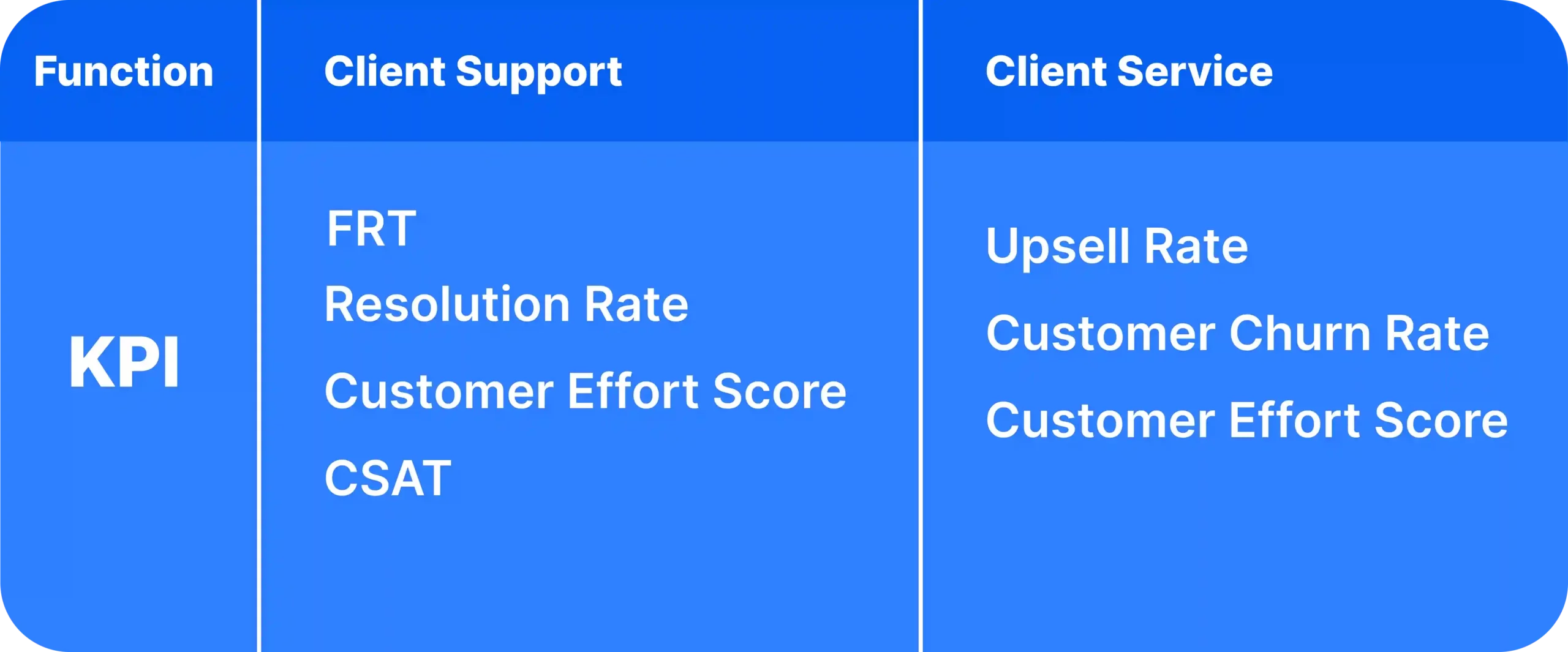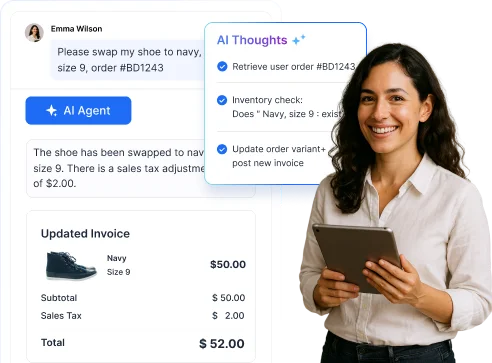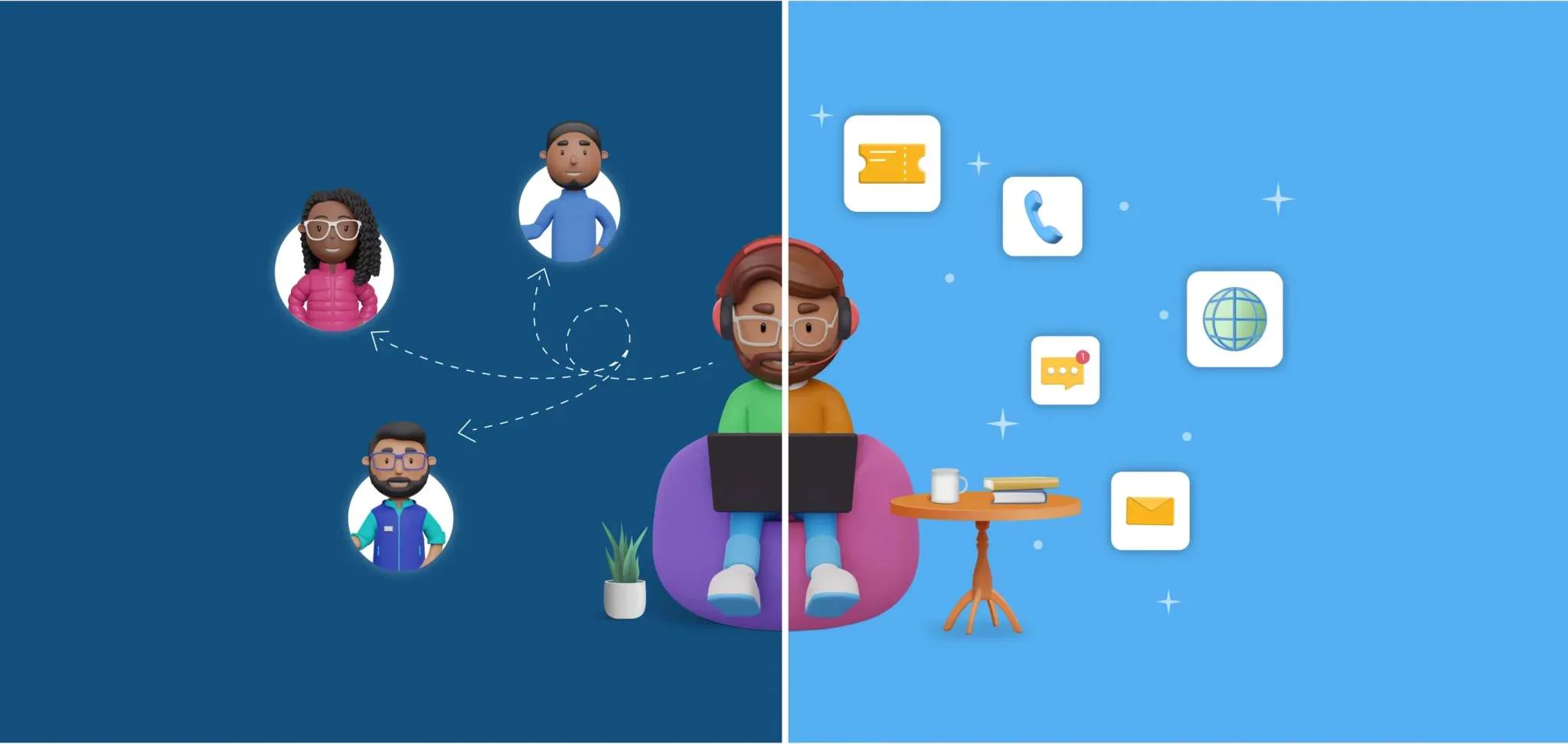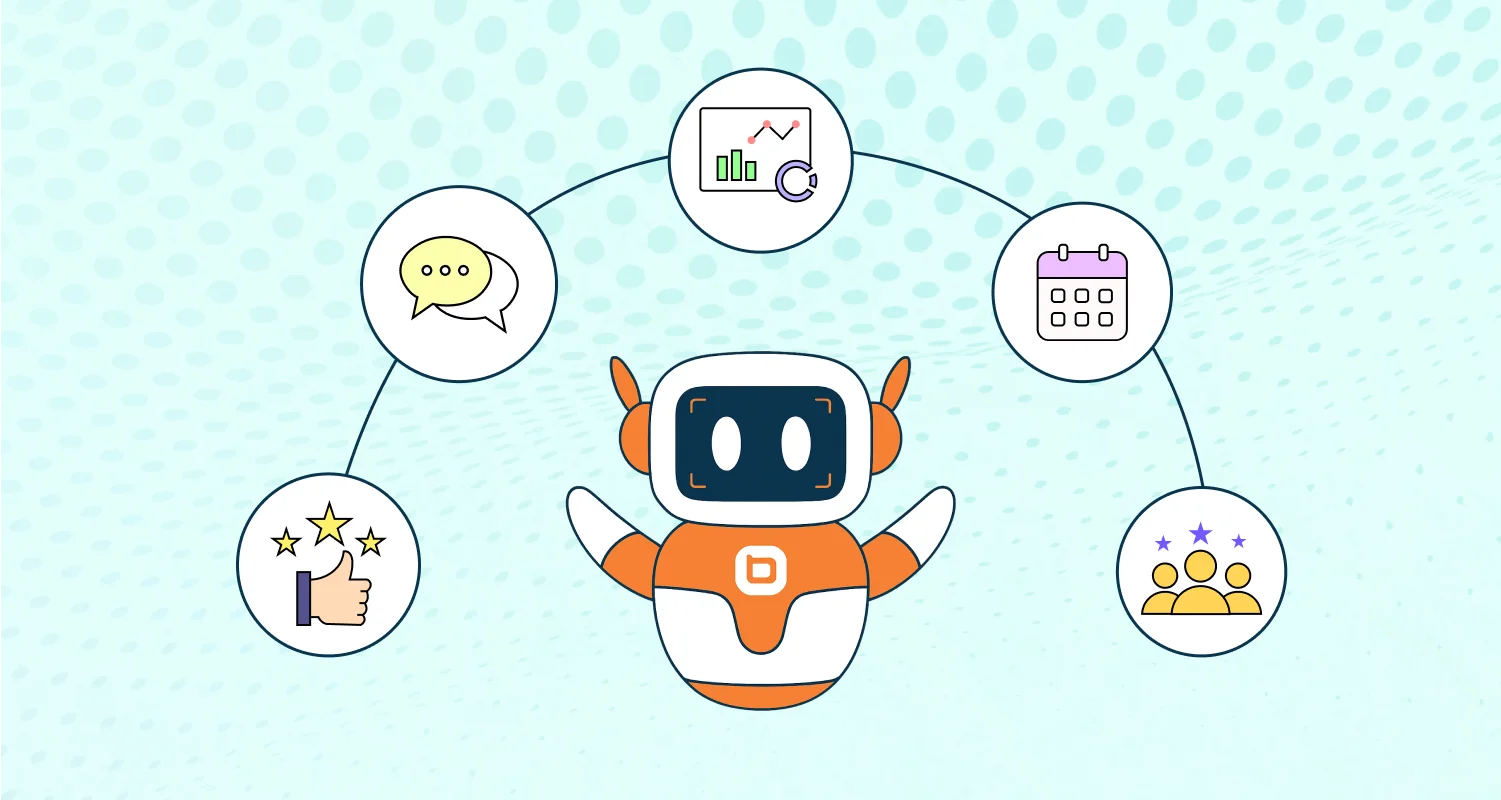With businesses offering nearly identical products and services, customers can switch to a competitor when even slightly inconvenienced.
In fact, a study by Emplifi revealed that 86% of consumers would leave a brand after as few as two poor experiences.
It is therefore crucial for companies to focus on delivering outstanding customer experiences to retain clients and foster long-lasting relationships.
Two elements make up a company’s comprehensive customer management approach: customer support and customer service.
This blog explores the crucial distinctions that set them apart from each other.
What does customer support mean?
Customer support refers to a range of services provided by a company to its clients, aimed at assisting them in effectively utilizing the products or services offered.
This includes responding to questions, providing guidance, troubleshooting issues, and offering resolutions to problems encountered by customers.
What does customer service mean?
Customer service refers to the range of activities and interactions a company engages in to meet, address, and exceed customer needs and expectations.
It involves maintaining client satisfaction and a positive brand image by:
- Providing pre-sale and post-sale assistance.
- Troubleshooting customer issues.
- Delivering tailored products or services.
- Offering expert guidance.
- Fostering effective communication channels.
The difference between customer support and customer service
The fine line between customer support and service can often seem blurred.
Understanding the methods employed, unique roles and objectives, time frames, and the metrics for assessing each function will help foster long-lasting, loyal relationships with your customers.
1. Methodology
Customer support is primarily reactive in nature. It involves responding to customer inquiries and resolving issues as they arise.
Client support teams typically engage with customers either in-person or remotely through phone conversations, ensuring their concerns are promptly resolved.
Customer service encompasses a broader range of activities designed to not only address customer concerns and issues but also to prevent them from occurring in the first place.
This involves measures such as predicting customer needs, providing relevant information, and ensuring a seamless experience.
Client service may also include reactive measures that involve promptly addressing customer complaints and resolving issues to enhance customer satisfaction.
2. Objectives
The main objective of client support is to offer quick and effective assistance to customers whenever they encounter problems when using a company’s products or services.
On the other hand, client service encompasses a broader range of activities that ensure customers have a positive and seamless experience when interacting with a company.
3. Key performance indicators (KPIs)
Since each of these client-facing departments has distinct goals and approaches, companies use different types of customer experience metrics and key performance indicators (KPIs) to evaluate performance.
A survey by Businesswire concluded that “The top needs for improving customer experience are more real-time insights (46%), gathering more customer data (40%), and greater analysis of customer data (38%).”
The KPIs for measuring the successes and failures of your client support teams are:
- First response time (FRT) assesses the average time it takes to respond to a customer query.
- Resolution rate refers to the percentage of tickets resolved.
- Customer effort score measures the perceived effort a client exerts to have their issue addressed.
- Customer satisfaction (CSAT) score measures the overall satisfaction of customers with the support provided.
The KPIs for evaluating customer service are more intricate compared to those for client support.
They include the following:
- Upsell rate tracks the number of times a team successfully convinces a client to make additional purchases.
- Customer churn rate measures the rate at which customers cease conducting business.
- Customer effort score, like client support, also gauges the ease with which customers can get their issues resolved by client service teams.
The table below summarizes the differences between the KPIs for measuring each function.

4. Duties and responsibilities
Customer support agents employ excellent communication and conflict resolution skills to empathize and adapt to different customer personalities and situations.
They have a deep knowledge of the products and services offered and hence play a significant role in creating knowledge base articles.
They leverage technology and multiple communication platforms to:
- Provide prompt response to customer inquiries
- Resolving diverse customer problems
- Escalating complex ones to higher levels
- Providing product and service information
- Maintaining inventory and system maintenance records

On the other hand, customer service involves a wide range of responsibilities, such as:
- client on boarding,
- pre-sales assistance,
- guidance throughout the purchasing process,
- and after sales services.
Client service teams focus less on the technical aspects of products and more on providing value to customers at every interaction.

5. Revenue generation
Support teams play a crucial role in the overall success of a business. While traditionally viewed as a cost center, the support department can significantly contribute to revenue generation.
Support agents are often the first point of contact for users facing issues. Providing timely and effective solutions can enhance the client experience, leading to improved customer satisfaction and loyalty.
Satisfied clients tend to buy again and recommend the business to friends and family, indirectly contributing to revenue growth.

Customer service is the frontline of interaction with users. During user interactions, customer service agents can identify opportunities for upselling and cross-selling.
By understanding customer needs and offering relevant additional products or services, customer service can drive sales and contribute to a company’s revenue.
Excellent customer service can also help reduce the customer churn rate.
6. Timelines
Client support deals with solving customer issues when using a product or service.
It is focused on the present, often involving troubleshooting, providing technical assistance, and solving problems as they arise.
On the other hand, client service deals with all interactions a customer has with a company, from the pre-purchase to the post-purchase stages.
Customer support vs. Customer service: Comparison chart
| Comparison factors | Customer support | Customer service |
| Definition | Customer support encompasses a variety of services designed to help customers use a product in the most cost-efficient and appropriate way. | Customer service involves the provision of professional assistance to individuals who purchase or use a company’s products or services. |
| Goal | To improve customer satisfaction, establish robust customer relationships, build trust and foster customer loyalty. | To aid users in resolving their issues and ensuring a smooth and seamless experience with the product or service. |
| Focus | Customer interactions, which include sales, inquiries, and overall customer experience. | Diagnosing issues, resolving problems, providing technical support, and problem-solving. |
| Effort | Single team | Single team |
| Skills required |
|
|
| Metrics |
|
|
| Approach | Client support operates in a reactive manner, providing service only when the customer initiates contact for assistance. | Customer service is reactive, mainly concentrating on handling issues reported by customers and providing timely responses to support requests. |
| Timelines | Interactions with client support are transactional; they have a start and finish. | Customer service prioritizes addressing clients’ immediate needs by resolving issues or answering queries to enhance their immediate experience and perception of the company. |
Conclusion
As we have seen, the differences between the two functions are quite subtle.
While it is essential to have separate departments for each to clearly define their responsibilities, they should also be able to collaborate to aid clients on their journey to customer success.
Consider BoldDesk the best help desk to manage these teams and improve the experience you give to your clients.
Contact us to set up a live demo to learn how BoldDesk functions and may be tailored to suit the unique needs of your company. Sign up for a 15-day free trial today.
Related articles



















 Email Ticketing System
Email Ticketing System Shared Inbox Software
Shared Inbox Software Multi Brand Help Desk
Multi Brand Help Desk Internal Help Desk Software
Internal Help Desk Software Trouble Ticketing Software
Trouble Ticketing Software Mobile Help Desk
Mobile Help Desk 
















